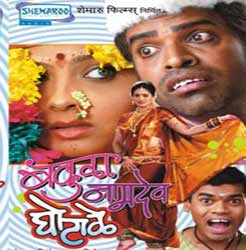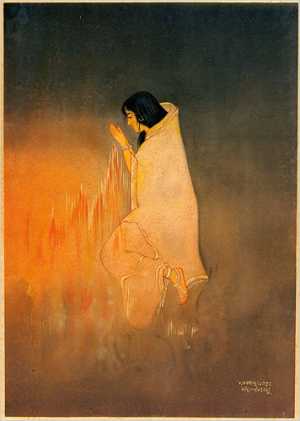[Below is a modified version of a wrap-up lecture I used in an undergraduate class last week, closing out our unit on Ulysses
. The class is titled "James Joyce and Modern Ireland," and it is aimed at senior English majors.]
When I was an undergraduate at Cornell, I took a class on Ulysses with a senior Joyce scholar who, in a pretty egregious example of a pedagogical faux pas, "required" us to buy two of his own books on Joyce and modernism from the bookstore. He also told us, via the course description, that he expected us to read A Portrait of the Artist as a Young Man before the beginning of the term, which none of us ended up doing. I bought both of the professor's books and never read them (recently, I finally threw them out). I also didn’t read Portrait of the Artist until around the time of my Ph.D exams several years later; my loss, for waiting so long.
Though my reading of Joyce was a revelatory and entrancing experience that fall, the class itself was somewhat of a disaster. For one thing, the in-class dynamic was quite tense, particularly around questions of gender in Joyce’s novel. As a rather radicalized, “politically correct” college student of the early 1990s, I was offended by Stephen Dedalus’ tortured relationship to women, a problem my professor wasn’t interested in (I didn't have the tools to see that Joyce disagreed with Stephen as well). I was also bored by Joyce’s “mythic method,” and didn’t really know what to make of the dense grid of literary allusions and parodies in the novel. Early on, I got into some heated arguments with the professor in class, and then retreated into defiant (Stephen Dedalus-like) silence as the semester continued. By the end of the term, I had silently vowed that Ulysses was not going to be my “thing”; I ended up writing my senior thesis the following year on Salman Rushdie, and worked with another professor, who had taught me, brilliantly and engagingly, Borges, Barthes, and Octavia Butler.
Fifteen years later, the roles are reversed. Is it possible to do Ulysses with undergraduates, and get it right? That is to say, without boring them and overwhelming them with an endless proliferation of mythology, religion, and authorial hagiography? (The people who come to heap praise on James Joyce may not realize that they are in fact unwittingly burying him: Death of the Author by deification. Or should I say, deifecation?)
Just as one joins one’s second rock band to show up the first, when you start to teach as a college professor, you often hope to correct what you think your own professors got wrong, while also preserving, if possible, what they got right. My goal this fall was, first of all, to try and teach Joyce in such a way that my students would enjoy him on their own terms, and be organically (rather than academically) interested in his works. Doing that requires inserting just the right amount of background, including 1) a sense of the trajectory of Joyce’s career, 2) sufficient explanation of Joyce’s relationship to Irish nationalism and the British Empire, and 3) some background on Joyce's relationship to contemporaneous aesthetic modernism in Europe in the 1910s. We started with Chamber Music, Dubliners, Portrait of the Artist, and (briefly) Pomes Penyeach, and we’ll be closing out the term in the next couple of weeks with a small dose of Finnegans Wake (where I am admittedly utterly dependent on Joseph Campbell). I have also been encouraging my students to engage, head-on, the questions about Stephen Dedalus’ seeming hatred of women, and anxiety about women’s bodies, while also adequately identifying and embracing Bloom as a “womanly man,” as well as Molly Bloom’s position of control (if not dominance) in their marriage.
My most direct reversal of the way I was first taught Ulysses was my choice to directly underline and foreground Joyce’s use of the body in the novel, with as much directness as I could muster without embarrassing either my students or myself. So: yes to nose-picking, defecation, urination, masturbation, voyeurism, exhibitionism, menstruation, decaying corpses, sado-masochistic play, cannibalism, drunkenness, and fat. Yes, yes, yes.
To give a specific example. As an undergraduate I remember getting “shushed” by my professor in the first weeks of the term, after he lectured us about the end of "Proteus." The professor had a great deal to say about the literary, philosophical, and theological allusions in the following passage:
Come. I thirst. Clouding over. No black clouds anywhere, are there? Thunderstorm. Allbright he falls, proud lightning of the intellect, Lucifer, dico, qui nescit occasum. No. My cockle hat and staff and his my sandal shoon. Where? To evening lands. Evening will find itself.
He took the hilt of his ashplant, lunging with it softly, dallying still. Yes, evening will find itself in me, without me. All days make their end. By the way next when is it Tuesday will be the longest day. Of all the glad new year, mother, the rum tum tiddledy tum. Lawn Tennyson, gentleman poet. Già. For the old hag with the yellow teeth. And Monsieur Drumont, gentleman journalist. Già. My teeth are very bad. Why, I wonder. Feel. That one is going too. Shells. Ought I go to a dentist, I wonder, with that money? That one. This. Toothless Kinch, the superman. Why is that, I wonder, or does it mean something perhaps?
Ah yes: Lucifer, Tennyson, the Nietzschean superman – all topics I knew next to nothing about at the time. The professor also found the Christian imagery at the very end of the episode (the “threemaster”) especially important. He was, however, completely uninterested in the part in between, where Stephen picks his nose:
My handkerchief. He threw it. I remember. Did I not take it up?
His hand groped vainly in his pockets. No, I didn't. Better buy one.
He laid the dry snot picked from his nostril on a ledge of rock, carefully. For the rest let look who will.
I, on the other hand, couldn’t get away from it. Huh -- Is he really picking his nose? It was the first time I had ever seen an acknowledgment of this “shameful” bodily act in print. Can’t we read Stephen’s picking his nose as a kind of satirical counterpoint to the weighty literary and theological allusions that surround this event? My professor’s answer: no. No nose-picking, not in this class.
Fifteen years later, here I am: students, what do you make of the fact that Stephen Dedalus, near the end of this dense cerebral episode on the nature of sensory perception, Aristotle and Aquinas, urinates into the ocean, and picks his nose? What do you make of the fact that Leopold Bloom wakes up with the thought of the “inner organs of beasts and fowls,” cooks a pork kidney for his wife, and then goes to the privy to defecate?
In my own approach to Joyce’s novel, I have drastically downplayed the “mythic method” and the framework of reference to The Odyssey. The Greek epic shapes the novel mainly negatively, and we don’t need to say that much about it (in my view, the most interesting use of The Odysseyin Joyce's book are actually the lyrical riffs on Homer's style, not so much the specific plot parallels). In The Odyssey, when Odysseus returns home after his 17 years abroad, the suitors who had attempted to woo Penelope in his absence are all slaughtered. In Ulysses, by contrast, Bloom decides against violence, confrontation, and divorce (leaving open the possibility of exposing the affair using some machination, and perhaps through that, making Boylan go away). Instead, he kisses his wife on the rump when he finally enters the bedroom, makes up some stories about what he did with his day, and then, before going to sleep, asks for breakfast in bed the next morning.
Bloom’s actions and travels during the day parallel Odysseus’, but represent a modern consciousness and an urban, cosmopolitan sensibility. Instead of killing the Cyclops (“Citizen”), Bloom merely tells him off. (Richard Ellmann suggests that the cigar he holds throughout episode 12 is the blunted modern echo of the spear Odysseus uses to blind the one eye of the Cyclops in Homer’s epic.) By reversing the pattern in this way, Joyce was making a point about what is intellectually interesting and important to people who live in the 20th century. Like Virginia Woolf, he’s especially preoccupied with what goes on in a complex individual’s mind, especially as that person deals with complex problems (“My wife is cheating on me. What do I do? This young man, who has not been particularly nice to me, looks like he could use a hand. How do I handle it?”).
That said, Bloom is still somewhat heroic in some key ways; he doesn’t just roll over and accept what life seems to have in store for him. For one thing, he’s constantly hustling to make and sell ads – even though the novel ends without him having made the sale on the Keyes ad he had been thinking about in the early episodes. He responds to direct insults when he hears them. He is incredibly generous throughout the day – as he gives money several times to help those in need, and most importantly, when he helps Stephen Dedalus survive a series of encounters with treacherous “frenemies” like Buck Mulligan, as well as the dangers of the red-light district of Dublin (“night-town”) in Episode 15.
Bloom grosses some people out, and indeed, we have to acknowledge that his tastes are pretty idiosyncratic and peculiar. He has a thing for women’s drawers, and buttocks. He really likes the “inner organs of fish and fowls,” which are not widely eaten today (except perhaps by Anthony Bourdain), and takes special pleasure in kidney, because of the faint tang of urine. In a novel full of incapacitated alcoholics, he doesn’t drink much, though he does savor a glass of wine in Episode 8. He seems to know a little bit about a thousand things, including biology, astronomy, philosophy, literature, and religion – though sometimes he misremembers what he thinks he knows.
That said, Joyce’s point seems to be that Bloom’s idiosyncrasies don’t make him extraordinary, but a normal, modern man. What’s extraordinary is the degree to which he seems to be able to be self-conscious about his particular tastes. (Molly has her own unusual tastes, as we see in Episode 18.) It might be that for suburban Americans at the beginning of the 21st century, the intensity and directness of life in Joyce’s Dublin seem a bit too extreme. Most American cities no longer have “red light” districts, as prostitution is now a different kind of business; most Americans do not buy fresh meat at a butcher shop, and as a result are at somewhat of a distance from the process by which meat is produced (we don’t see the blood). And of course, you will never see a group of medical students getting drunk on their off hours at the maternity ward today (perhaps that’s for the better!). And those are just three examples. Does the fact that most of us live more contained, sanitized lives mean that we are somewhat less interesting people than Leopold or Molly Bloom? Perhaps, though even in the “Purell” version of life, odd, unpredictable, and very physical things still happen – though perhaps not quite as often. (You encounter fewer people when you’re driving a car instead of walking, and there’s less room for random or impulsive choices, like Bloom’s sudden decision to spend a few minutes in a church early in the novel.)
Of course, the most overwhelming part of the novel is Joyce’s endless stylistic improvisation. Every chapter is slightly different, stylistically and thematically. Starting around Episode 7, the stylistic inventions become quite obtrusive, sometimes reaching such an extreme (Episode 14) that the text itself becomes impossible to read without constant reference to annotations (or, let’s be honest, a certain amount of skipping and skimming).
We could dismiss this as virtuosity run amuck – Joyce had too many ideas, and too much access to information he could pour into his book. Some readers, like Virginia Woolf, have thrown up their hands over the years at this aspect of Joyce’s writing, finding it irritating, self-indulgent, and boring.
That said, the hyper-inclusiveness of Ulysses can also be defended, as a particular facet of modern life. We do have access to tons of information – things are constantly entering our minds, getting processed, and then getting spat out. Advertising, popular music, television images, and the news, are all fodder for our brains, and if we were to give a true portrait of what goes through an average urban person’s mind over the course of an average day, it would probably include a fair amount of that disposable material.
[And here, a hint for students writing papers on the novel] The encyclopedic quality of Joyce’s novel does pose somewhat of a problem for people who write about Ulysses. There is simply too much there, too many examples, too many variations on the major themes. The best essays on Ulysses tend to take a narrow theme as a focus, and use the development of that theme as a way of finding an angle or a reading of the novel. A classic structure is to take a theme that interests you, and show how it develops in three stages (possibly, amongst the novel’s three major characters). For instance, if you were interested in cooking and food, you could take a look at the food that is cooked at Martello Tower in Episode 1 (where Stephen does not eat), one or more of the episodes involving Bloom eating through the middle part of the novel, and finally Molly’s own references to food and eating at the end. The goal, of course, is to find an argument that shows some sort of movement or growing awareness relating to food, as described through these three glimpses into Joyce’s characters’ minds.
 People talk trash about Air India, but it has one distinct advantage -- if you're lucky enough to fly to and from India on one of their newer 747s, which are equipped with personal video screens, you have a wealth of Indian TV, movies, and music to entertain yourself with, while eating
People talk trash about Air India, but it has one distinct advantage -- if you're lucky enough to fly to and from India on one of their newer 747s, which are equipped with personal video screens, you have a wealth of Indian TV, movies, and music to entertain yourself with, while eating 
